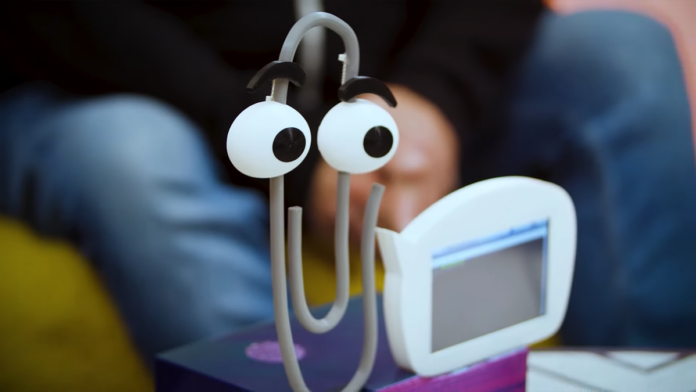[ad_1]
As Microsoft excitedly adds Chat-GPT to Bing, Word, Edge, and dozens of other products, I can’t help but think of Clippy. The ancient assistant could be seen as a precursor to modern, collaborative AI. Clearly someone else had the same thought, but actually did something with it.
Roboticist David Packman created an animatronic Clippy that responds to voice prompts using Chat-GPT. Like Alexa or Siri, it listens for a wake word (“Hello, Clippy”) and responds accordingly. Voice prompts and responses from Clippy are processed through Azure Speech Services, all running on a Raspberry Pi computer.
But this isn’t just a smart speaker, it’s a robot. A CRICKIT HAT from Adafruit allows Clippy to wiggle his eyebrows, mimicking the original animation of him, somewhat condescendingly. In addition, a small speech bubble with an embedded screen provides a written version of the user’s voice input and the output of Clippy’s Chat-GPT.
The ClippyGPT bot enjoyed a starring role in a recent Microsoft Developer video, where creator David Packman talked about how it works (and AI in general). It’s a very interesting video, especially if you’re a fan of retro technology and early attempts at “smart” software assistants.
Obviously, this iteration of Clippy is much more advanced than its predecessor. It can still help you format a letter, but thanks to the power of Chat-GPT, it can answer advanced questions, hold a conversation, guide you through a recipe, and perform various other tasks. As Packman points out, Chat-GPT is relatively flexible, and ClippyGPT is just one example of how conversational AI can play a variety of different roles.
If you want your own ClippyGPT, you can follow Packman’s build instructions on Hackster. Please note that this is a fairly advanced project that requires 3D printing, electronic work, and coding.
Source: David Packman and Microsoft via Raspberry Pi
[ad_2]
